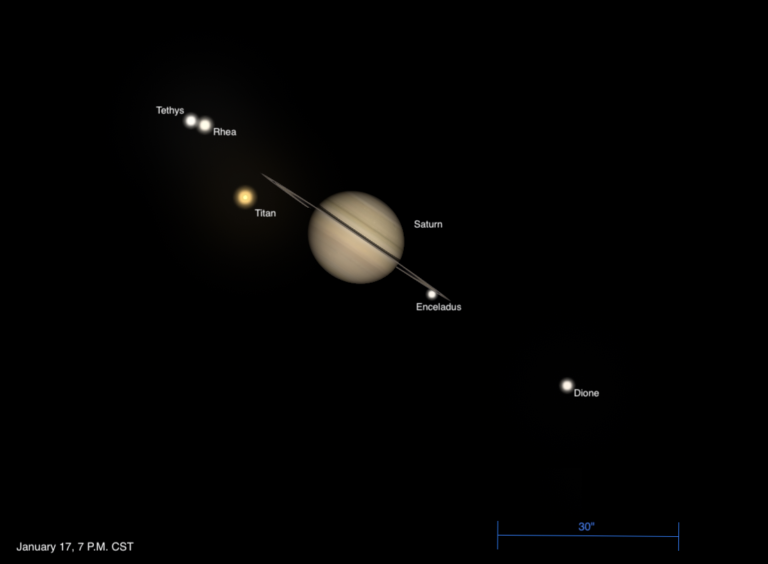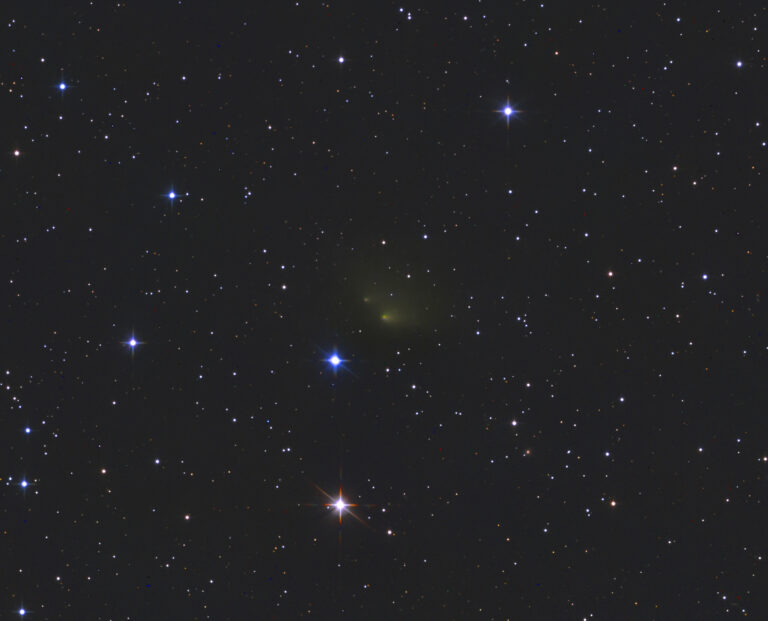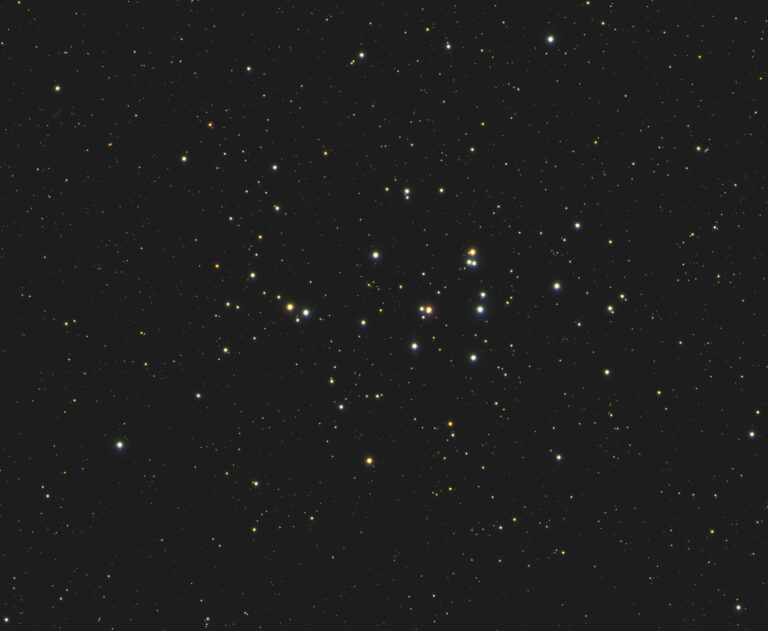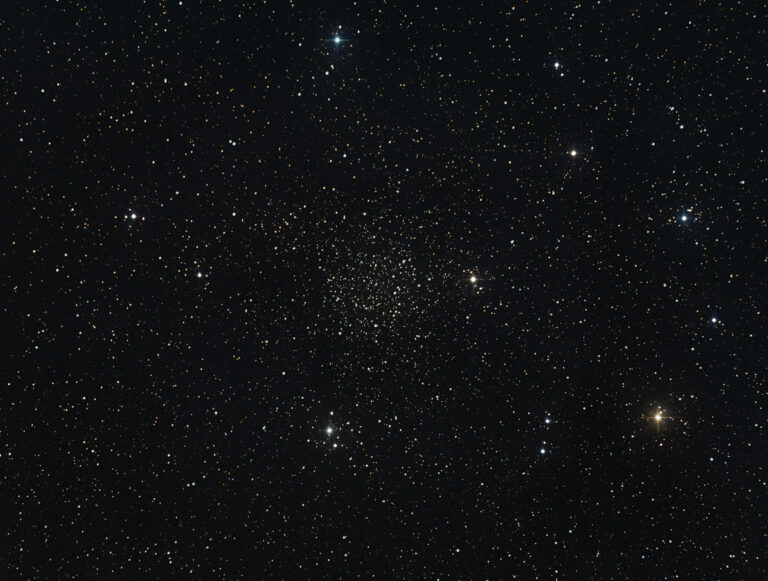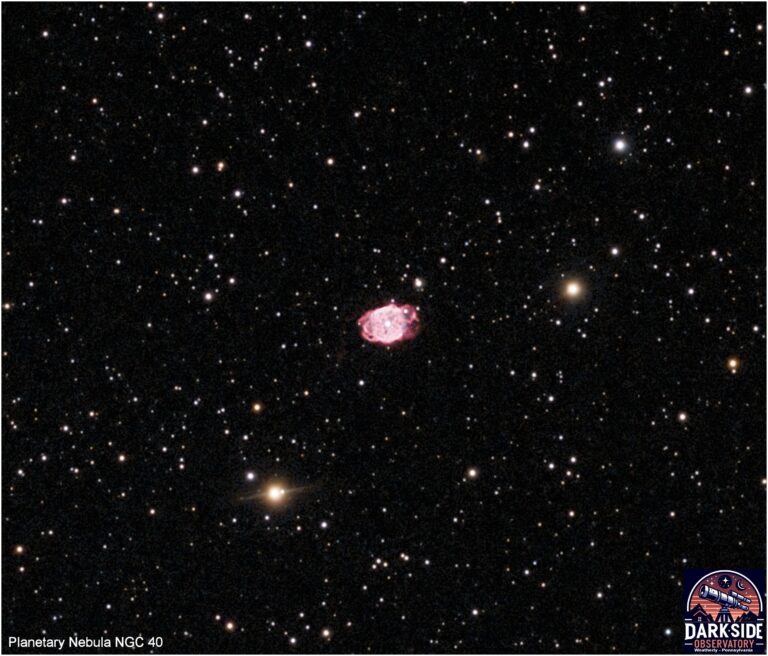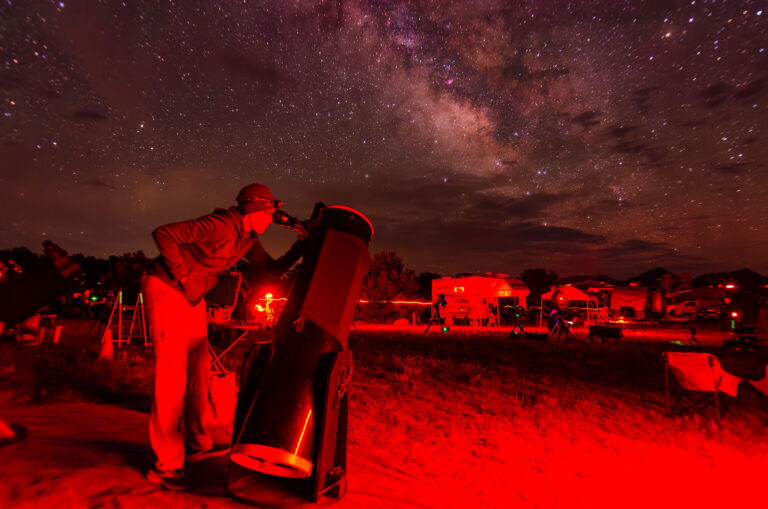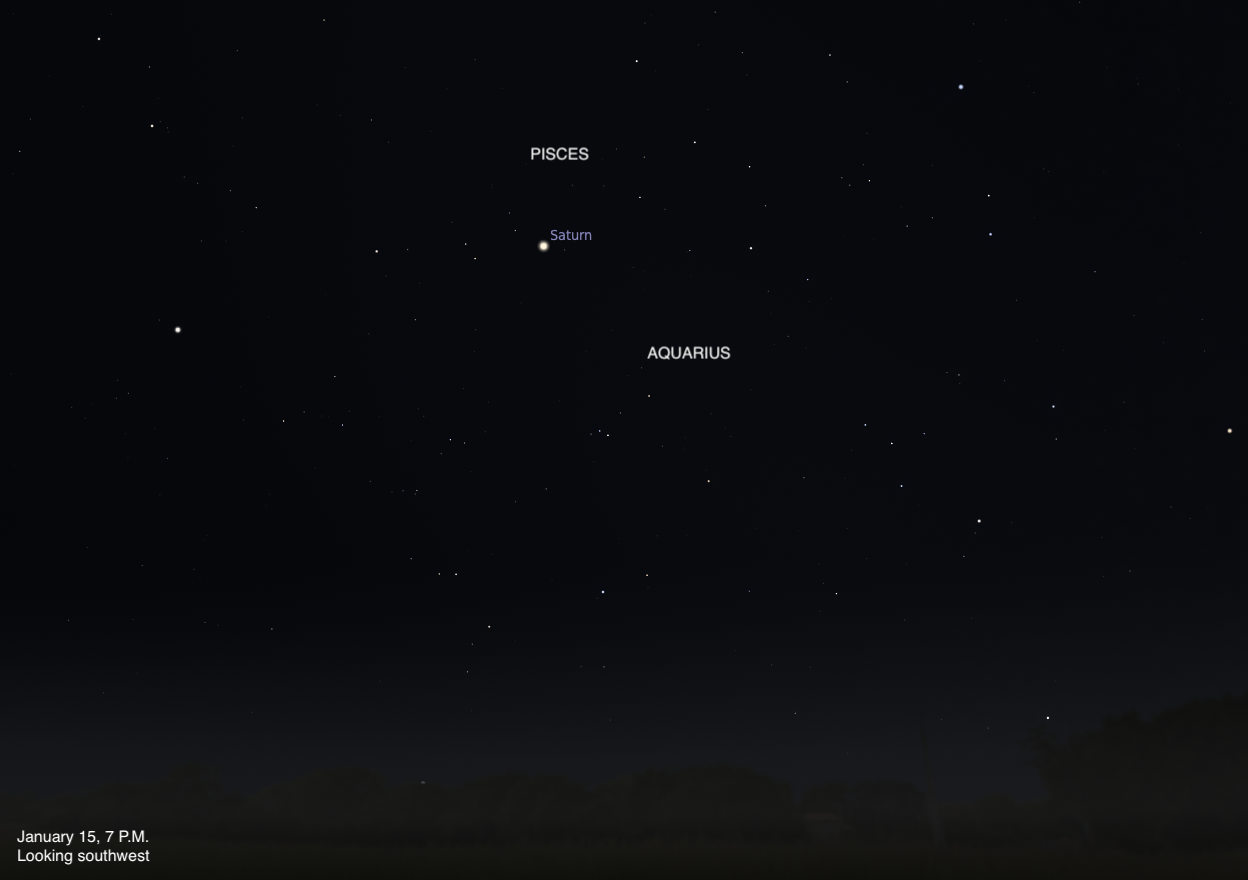To celebrate, our topic: planet oddities. We’re talking about truly weird stuff, beyond the more familiar curiosities. Many folks already know that Venus is upside down, Saturn would float in a large-enough lake, and broiling Mercury has tons of ice, providing winter sports to a world badly needing it. Now let’s go to the next level of weirdness.
Start with this question, guaranteed to stump your physics teacher or parole officer: “Which planet is brightest when it’s farthest away?”
Doesn’t seem possible. Yet Mercury, in a move opposite to Venus, grows most brilliant when on the far side of the Sun, like it is this month.
Mercury’s also the darkest planet. It’s blacker than an asphalt road. Yet it profoundly alters its brightness in the sky, varying a thousandfold. This past year, Mercury went from magnitude 5.3 — invisible from most locations — to a dazzling –2.4, brighter than Jupiter is this summer.
In addition, that second-densest world (Earth is the most) spins exactly three times while it orbits the Sun twice. This gearlike resonance of its day and year creates odd consequences. We are accustomed to having one sunrise per day. But three leisurely 59-day spins must pass before dawn recurs on Mercury. That’s one sunrise every two Mercury years. They’re 177 days apart. Birds singing at daybreak: Nice here, but a lot rarer on Mercury.
There’s more. Mercury boasts a region resembling nothing else. It’s called the “Weird Terrain.” Apparently, shock waves or else debris from the colossal meteor impact that formed the planet’s huge Caloris Basin traveled halfway around the planet and then collided at the exact antipodal point to wreak havoc and create an unusually hilly and rutted environment.
Mercury’s orbit, already the most eccentric, will get even more lopsided thanks to the influence of distant Jupiter, of all unlikely villains. Its path might stretch out enough to make it collide with poor Venus, destroying both worlds in the next 5 billion years.
5 MILES ABOVE EVERYTHING
ELSE LIKE A SCI-FI CITY.
With Mars, other than its freaky dust devils, its elliptical orbit deserves a look. We always wait 26 months for Earth and Mars to meet again, but the rendezvous can happen at a slim or wide gap in our orbits. The narrowest occur during a late August opposition. Remember 2003? Mars looked larger through a 75-power telescope than the Moon appeared to the naked eye. All sorts of intriguing detail emerged. The fascinating rarity of those very close approaches makes them precious. The next four times Mars grows larger than 25 arcseconds? Mark your calendar: 2050, 2082, 2129, and 2208.
Our next stop is Jupiter, where, like Las Vegas, you can find anything you want. One moon (Io) is covered with nonstop erupting volcanoes; another (Europa) has pleasantly warm, briny subsurface oceans. The next (Ganymede) could give you a dozen CT scans of daily radiation, no insurance questions asked.
And the planet’s bucket list destination, the Great Red Spot, floats 5 miles (8 kilometers) above everything else like a sci-fi city. It’s been orange the past few years. No one knows exactly what causes the color. For contrast, nudge your scope north to Jove’s equator to see giant holes in the clouds revealing gorgeous patches of blue sky. Really.
Saturn? Well, that giant persistent hexagon at its north pole, 60 miles (100km) high, takes the prize. Aliens must have used slave labor to build it so sturdily. It’s now aimed our way and will tilt maximally toward us in 2017. That high-tilt setup also will make the rings’ shiny ices double Saturn’s brightness.
Yet Saturn cognoscenti prefer the rings’ opposite surface. Whenever its south side fully slants our way (2003, 2032), Saturn is nearest to the Sun and nearly twice as bright, plus maximally high in the zodiac’s northernmost suburbs. The planet then outshines even the bright stars Vega and Arcturus. Saturn’s unrelated orbital shape, axial tilt, and declination work strangely in sync, like gears meshing. But whenever they make the ringed world most brilliant, the alien hexagon is hidden.
Turns out the Perseid meteors, delivering their reliable oohs and aahs, blaze through a solar system as wonderfully strange as any we could ever imagine.


